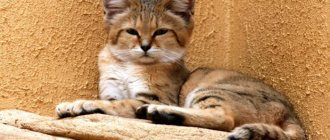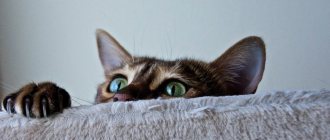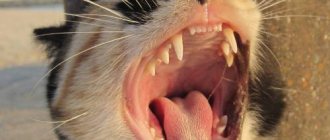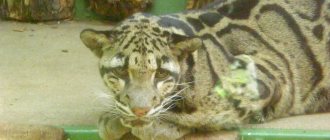Have you been given a kitten? Or did you decide to start it yourself? This is not important, the main thing now is to find out as many facts as possible from the life of this animal. A meowing creature will give you and your child a lot of positive emotions. And you will learn to correctly interpret its particular habits, understand your pet better and know a lot of useful things about its relatives. Interesting facts from the life of cats will be useful for adults and interesting for children. This will broaden the kids’ horizons and make them think about a lot. In this article we will list the most interesting facts about cats, their habits and tell you a lot of useful information.
A little about traveling cats
Did you know that these animals can travel not just long, but enormous distances to get to their home? Thanks to this feature, one cat from New York became famous, which the owner, due to his carelessness, forgot when moving to his old place. The animal found its owner on its own after 5 months, having covered 3.5 thousand kilometers! At the same time, the cat entered the house, as usual, jumped onto his favorite chair and curled up there. Such interesting facts about cats will allow children to understand how loyal these pets are.
In the same way, a Russian cat named Chapa became famous. He traveled with his masters to the sea, who lost him halfway. People were upset, but when they returned home, they found Chapa rested, but very dirty. The cat covered a distance of 1.5 thousand kilometers! When telling interesting facts about domestic cats to your children, explain at the same time how important friendship is in life, because even animals make such sacrifices!
The best cat breeds for children
This section will discuss which cat breeds are suitable for children. However, you should not think that if you have a non-aggressive breed, you can relax. Whatever breed the pet is, it is important to teach children to respect it and treat it with care and tenderness.
Persian
Very patient and calm. Popular not only because of her cute face, but also her good disposition. Moderately playful and loves to interact with children. In a study examining the relationship between cats and people, this breed was found to be friendlier than a mongrel cat.
British Shorthair
Not the most playful breed, especially in adulthood. But she has an excellent temperament, she is obedient and patient. Will be a good companion in raising small children.
Maine Coon
Long-haired, stately and very calm cats. They are curious and love attention; they can entertain children with games for a long time. Gentle giants are indifferent to strangers, but are very devoted to their family. An excellent option for families with children and other animals.
Scottish Fold
Portrait of a scottish fold breed blue cat
Laid-back and friendly. They love to play and receive attention from children, and cannot stand being alone. There is nothing better for them than being close to their owners and participating with them in family affairs. A special feature of the breed is the ability to talk with household members using various purring sounds.
Siberian
Cats with incredible self-control and bold character. They will follow the kids everywhere and participate in household chores. They are very active and playful, not afraid of strangers. Noises and activities do not bother them; on the contrary, they are comfortable under such circumstances.
Interesting things about pet health
Many people believe that cats wash themselves often because they are clean. Yes it is. However, this is not the only reason. This is also how the animal licks from the fur the amount of substance it needs, which contains vitamin B. It is also needed in order to regulate the cat’s mental balance. If you do not allow the animal to perform such a “ritual” for a long time, it will become very aggressive and may even die from stress.
How long do cats live? Interesting facts for children must contain this information. On average, a domestic pet can please you for a long 15 years (with proper care and good nutrition), while wild cats live less - 3-5 years.
Cat family
Wild cats are common on all continents except Australia and Antarctica, in regions with warm climates. In the taiga zone, only the Amur tiger, the Far Eastern leopard and cat, and the lynx have survived.
- Big cats: lion, tiger, leopard, snow leopard, jaguar.
- Small cats: cheetah, caracal, lynx, manul, several wild species, domestic.
Rice. 1. Wild jungle cat.
Human and cat health
It's no secret today that cats have a wonderful effect on people's health. A special study was conducted in the USA, the results of which are amazing - most doctors recommend that every person keep a pet in the house, preferably a cat. They believe that this is the ideal “recipe” for ridding people of many diseases. It has also been proven that purring creatures perfectly relieve stress and help get rid of fatigue.
Interesting facts about cats and cats don’t end there. According to research, the presence of this animal in the house can prevent a heart attack or stroke. To do this, just pet the fluffy - and the pressure will drop and the anger will go away.
Legends of the Slavs
The ancient Slavs believed that cats were responsible not only for guarding sacks of grain, but also for peace in the house. The spirits of the home, the brownie and the barn, could be harmful if the owners forgot about them. There is chaos, people often get sick or quarrel, or even a fire starts, which means they have angered one of them.
A small offering, such as a saucer of milk, could appease wayward spirits. Cats knew a lot about this, so, according to legend, they shared treats with powerful neighbors. If a brownie rarely caught the eye of a person, then he developed a real friendship with the cat.
"Interesting" anatomy and stuff
It is better to tell these interesting facts about cats to children if there is a pet in the house. This way the child will perceive information better and faster.
- Have you ever noticed the pattern on the surface of your pet's nose? Surely not. But you simply must know this - such a “pattern” is unique, just like a person’s fingerprints.
- The skeleton of a cat is formed by 230 bones, which is 24 more than that of a human!
- These animals do not have "normal" collarbones. Thanks to this anatomical feature, they can easily squeeze their body through the tiniest holes where their head can fit. You may have seen more than once how your pet checks a hole, trying to squeeze its head into some hole.
Incredible abilities and features
- The cat is a talented acrobat. Its front legs are designed by nature so that they can rotate in almost any direction, but both halves of the pet’s flexible body can move in completely opposite directions! Well, aren't these interesting facts about cats for children? Agree, not all adults know about this.
- The animal has five toes on its front paws and four on its hind paws.
- The cat's ear can rotate 180 degrees! Each of them has 32 muscles. It seems that pets can easily move their soft ears, but this action requires the use of 12 muscles!
- Some interesting facts about cats for children seem simply unimaginable, it is impossible to believe, but it is true. For example, this animal's hearing is better than that of a dog or a human. For comparison: we hear within 20 kHz, cats – 65 kHz.
Cats and mice
Facts about cats for children will be more entertaining if there is already a pet in the house. So hurry up and grab the purring “cure” and read on.
A cat can hear in the ultrasonic range! That is why its “ambush” near the little gray mouse’s hole is advisable even when the rodents “sit motionless.” After all, they communicate using ultrasound, and the cute predator doesn’t need more.
In just one year, this animal can save more than 10 tons of grain from mice.
For example, once upon a time about 600 cats lived in the Winter Palace of what is now St. Petersburg. Animals were settled there long before the revolution. According to some sources, their offspring still perform their duties there - catching mice.
In Austria there was once a fairly famous cat that guarded food warehouses from rodents. She did this so successfully that she was entitled to an old-age “pension” - she was constantly supplied with milk, meat, and broth.
As you can see, some interesting facts about cats for children also contain historical information, which also will not interfere with all-round development.
A story about a cat for children 6-8 years old
A story about a cat for preschoolers and primary schoolchildren
About a pet.
Alechka is my favorite cat. Author: Bukarev Daniil, 8 years old, student of school No. 401, Kolpino St. Petersburg Leader: Efimova Alla Ivanovna, teacher of GBDOU No. 43, Kolpino St. Petersburg Purpose: message about a pet. Objectives: 1. Tell about your favorite pet. 2. Foster interest and love for animals. Description: use in working with preschoolers and first graders; for loving parents. Can be used for home reading. Today I want to tell you about my favorite – a cat.
Her name is Alya, and I affectionately call her Alechka. She is very beautiful, I photograph her often and love watching her. All so fluffy: black fur, white tie on his chest, white paws. In the morning she washes herself, or rather licks herself all over. She wakes up early and walks around waking everyone up with her meows. Alechka loves people very much. If guests come, she asks to be held by everyone.
My older sister brought my Alechka home when I was very little. I became very attached to her. In winter, my cat lives with me in the apartment, I like to play with her, feed her, give her milk and water. Alya loves sausage and fish. She is a very clean and smart cat. On winter evenings, dad is lying on the bed, Alechka will come up to him, meow so that she is allowed to jump on the bed, and only then she jumps. She loves to be petted. Mom feeds her, washes the potty, Alya runs after her mother with her tail. He rubs himself against his mother's legs as a sign of gratitude. Very funny. In the summer we go to live in the country and of course, I take my pet with me.
At the dacha, she loves to run, climb trees, and scratches her claws on the wooden fence. Alechka sometimes catches mice, catches them and carries them, puts them on the path and calls us to the owners so that we can look at her catch. I ask my mother to buy a collar for Alechka and put it on her. He protects her... I also go fishing with my dad and give the fish I catch to my cutie. I call my beloved cat Alechka, I’ll catch some fish for my beloved Alechka. I’ll go to the river with my dad and catch some fish for the cat. Alechka will eat to her fill and go to bed. She loves to sleep on her back, legs and belly up, and sleep herself.
I love my cat very much! I love to play with her, she hides from me, and I tie a piece of paper to a string and slowly pull the string, and Alechka runs after the rope with a candy wrapper. I also have a ball with a string, which I also use to play with Alya.
When I go to school, my parents go to work, my sister studies - Alya misses us. When we return, she meets us at the door. She meows as if she's crying that we left her alone. Alechka walks around the property like a housewife: she sniffs everything, goes into her mother’s greenhouse, and goes to visit the neighbors. She's an amazing cat. I love her so much. This is how wonderful my baby is.
We recommend watching:
A story about a dog A story about a hedgehog for children A story about a Goat for children A story about rabbits for children
Similar articles:
Stories about animals for children. Bathing the cubs
What history says
Although it is commonly believed that the ancient Egyptians were the first to domesticate cats, the oldest domesticated animal was found in a 9,500-year-old tomb in Cyprus. And this is more than 4000 years ahead of the information in Egyptian sources.
Pope Innocent VIII (these were the times of the terrible Spanish Inquisition) recognized these four-legged animals as assistants of the devil, as a result of which thousands of defenseless cats were burned at the stake. Unfortunately, such mass extermination led to a sharp increase in the number of rats, which made the consequences of the plague epidemic dire.
In the Middle Ages, these fluffy creatures were associated with black magic; on St. John's Day, they were cruelly stuffed into bags and then thrown into bonfires.
There is a Jewish legend that Noah prayed and asked God to save his ark and all its contents from an infestation of rats. In response to this, the Almighty made the lion sneeze, and then a cat jumped out of his mouth.
The history of the “domestication” of cats
It is not for nothing that from time immemorial people have kept these animals next to them. They were tamed ten thousand years ago, at the very dawn of civilization. Of course, at first, ancient people were attracted by the ability of cats to hunt disgusting and dangerous rodents - rats and mice, which not only destroyed food supplies, but were also carriers of the most terrible, deadly diseases.
People could not cope with these enemies, but they quickly noticed that domestic cats are great at hunting rodents and decided that a good relationship with them would not hurt. Cats also decided that being next to a person could be useful for them - and this is how this friendship between man and animal began.
A little about vision
It turns out that of all animals, cats have the largest eyes in relation to their weight. If the animal were the size of a person, the eye would reach 4-5 cm in diameter. And most meowing creatures have no eyelashes.
Many are confident that cats are capable of seeing all the objects around them remarkably well in complete darkness. However, this statement is somewhat erroneous. Of course, in this case they see better than a person, but not perfectly. This feature is explained by the fact that the animal’s eyes have a special unique reflective layer that increases the amount of light falling on the retina. By the way, the cat doesn’t see anything right under its nose, which is why it takes so long to look for a tidbit if you put it right in front of it.
And if her pupils are dilated even in bright light, then she is in a playful mood or very interested in something.
Legends from Ancient Egypt
The ancient Egyptians had many gods, but Ra was considered the most important. He personified the hot sun, which gives life and warmth. According to legend, he knew how to take on different images and constantly fought with enemies. One of them was the serpent Apep - a symbol of the darkness of the night. Every night before dawn, Ra turned into a red cat, fought with his opponent and defeated him. “That is why the sun rises every morning and the darkness recedes,” the Egyptians thought.
Ra had many children. One of his daughters was named Bastet, and she was the patron of the hearth, the women who kept it, fertility, as well as love and joy in the family. And who likes to take a nap by a warm fire and makes everyone happy? Of course, cat! Therefore, Bastet was painted as a woman with a cat's head. The furry mousecatchers themselves were considered her messengers and were very sad if something happened to them. Killing a cat was punishable by death in Egypt.
Interesting facts about cats
Children's development should be comprehensive and involve different forms of learning. But no matter how you talk about cats, it will be interesting in any case, the child will listen to you with eyes wide open in admiration.
Why does an animal sniff its bowl before eating? Don’t think too much, it is not mischievous and does not go through grub, as many believe, but does this in order to determine the temperature of the delicacy with its nose, so as not to get burned.
Four-legged purrs sleep approximately 18 hours a day, and they like to do this on paper, since this material is the softest and warmest for them.
When does a cat wag its tail? This happens when she is faced with a choice when one desire is blocked by another. For example, when an animal is in a doorway and is simply exhausted from the desire to go outside, but it is raining there, the tail will move due to an internal conflict.
Are cats dangerous for children?
Cats can be good friends, but don't forget that they are predatory animals and it is important to ensure safety when interacting with them.
Cats can be unpredictable; they can scare, bite, or scratch a child. It is important that games with your pet are supervised. Teach your offspring how to behave properly with an animal. But don’t expect him to strictly carry out your order; children do not realize the danger.
Children themselves can provoke an animal into aggressive behavior.
Do not leave a small sleeping baby alone with your pet. It can become an accidental cause of suffocation if it lies near the baby's face or on the chest, thereby interfering with breathing. Don't let your pet make the crib a place to play or sleep.
Cats can become carriers of infections, especially if they walk outside. Various parasites, worms, fleas, ticks, ringworm, conjunctivitis, toxoplasmosis and other diseases are transmitted from cats to humans. Do not allow your child to interact with other people's street animals.
Any cat disease requires prompt treatment because many of them are contagious.
Follow the rules of personal hygiene, wash your hands after handling your pet. Don't let your cat go outside. Do not skip visits to the veterinarian for routine vaccinations of your animal. Wash your cat in the bathroom at least once a month. Keep his bowl, litter tray and toys clean.
And that is not all…
- Biologically, a cat's brain is closest to a human's. In humans and in these loving pets, the same parts of the brain are responsible for emotions.
- Don't be surprised that your pet can jump to a height that is 5 times greater than its own height.
- When your pet rubs against you, do not think that she is doing it only out of affection. She wants to mark her territory (in this case, the owner) with the smell of the glands that are located around the muzzle. A similar odor is released from the paw and tail area.
- Scientists still cannot figure out exactly how a cat purrs. Some believe that this happens due to the vibration of the vocal cords, which are located deep in the purr's throat. To do this, the muscles located in the larynx close and open the air passage approximately 25 times per second.
- The animal's jaws are not able to move from side to side, so it cannot chew huge pieces of food.
- A cat's heartbeat is significantly different from a human's. The contraction frequency is approximately 110-140 beats per minute.
Do animals have a sixth sense?
Since ancient times, people have known about the incredible abilities of cats to foresee trouble, catastrophe, and natural disasters. For example, even before the wailing of very loud air force sirens, adults drag their young to secluded places. There are many cases in history when animals saved people in this way before earthquakes.
Have you ever noticed that if your pet rubs her ears hard, then it starts to rain heavily? No? Pay attention to this. The thing is that at this time a change in pressure occurs in the atmosphere, irritating the animal’s inner ear.
And cats anticipate earthquakes with the help of their sensitive paws and whiskers. With their help, they detect even the slightest vibrations in the soil.
These are the facts about cats. Study them with pleasure and take care of your pets!











